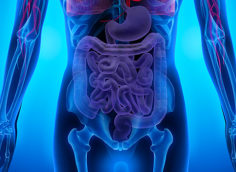You eat right. Actually, you eat right more than 90% of the time. You certainly train hard. In fact, you love training and rarely, if ever, miss a workout. You take protein and creatine, like any serious trainee should.
Yet for some reason, you still can't make significant changes to your physique. Though you look "good" and most people would love to have your body, you've been roughly the same weight and body composition for a couple of years now.
You've just about reached the point where you're willing to accept that you just can't progress any further. After all, you've probably gone as far as your genetics will allow.
On the other hand, a part of you holds on to the hope that maybe there's a magic diet or secret supplement that will push you over the edge and into uncharted territory with your physique.
Don't give up, there's hope for you yet. I'm going share with you how attention to detail can unleash your best physique yet.
Case Study
A few months ago I began working with a T-Nation reader by the name of Jesse. Now, Jesse is one of those guys that had been paying attention to his diet and training hard for years. He left no stone unturned, or so it seemed.
Yet, despite his effort and consistency, he was stuck at 196 pounds, about 12% body fat, and with a 35 1/2 inch waist for quite some time. He would drop weight and lean up a tad here and there, but real progress had evaded him for a long time.
Jesse came to me seeking to improve his physique. When I asked him if his goal was to lose fat or to build muscle, he said "both." Had Jesse came to me either wanting to get leaner or to gain muscle, I'd have thought, "no problem." But he said he wanted to get almost as lean as a competitive bodybuilder and to gain some muscle.
Now the pressure was on me to work some serious magic. So I put on my robe and wizard's hat, and decided to look very closely at Jesse's training and nutrition programs to see where we could make some improvements.
Nutrition Fine-Tunings
While Jesse did tend to "eat right" more than 90% of the time, I found that he didn't actually have a specific plan. On and off he would keep a diet log, which he pointed out that he did well with. This is understandable as it gives one a visual of what they're actually doing as opposed to what they think they're doing.
But even this diet log was a record of what he ate. It wasn't a plan created in advance to dictate what he would eat. There's a big difference.
Have a Plan
Instead of just winging it, you should plan your diet (protein, carb, and fat intake) a week or two in advance. Then, depending upon how you respond, you can modify your next plan. Don't worry, you don't have to be a nutrition expert to do this. You simply go by trial and error, sticking with what works, and changing what doesn't.
One of the major benefits to having a pre-determined plan and sticking to it is that you'll be more likely to get in all of your meals and will be less likely to cheat. After all, you have right there on paper what you're supposed to do.
When you're just winging it, it's easy to consume five instead of six meals and not even notice it. Likewise, it's all too easy to forget that you had three cheat meals this week instead of one.
Precise Portions
Like most people, Jesse didn't precisely weigh and measure his foods. So I sent him shopping to get a good digital scale to make weighing food a snap.
Dorian Yates once commented that when people ask him for diet advice, he would immediately ask them exactly how many grams of protein, carbs, and fat they were eating per day. The vast majority would say they don't know exactly. He would go on to say something to the effect of, "Then how in the bloody hell do you expect me to help you?"
If you're serious about making changes to your physique, you have to be precise with your food intake.
The Diet
The first thing I noticed about Jesse's diet tendencies was that he habitually didn't consume very many carbs. In fact, he was perpetually on a low-carb diet. He was afraid to consume more carbs because he felt they made him put on body fat.
I'm not against low carb diets, but it's hard to bust plateaus while you're carb- restricted. I put Jesse on a plan that consisted of high, medium, and low carb days, so that we could initiate some anabolism while minimizing body fat accumulation.
Later, Jesse commented on how he was amazed at how many carbs he could eat and not gain fat. "I'm now a huge proponent of carb cycling," he said. I'm not trying to sell carb cycling here, but it does work well.
Tweak, Evaluate, and Re-Tweak
Within just two weeks, he went from 196 up to a high of 202 pounds, then settled around 200 pounds, while slightly reducing his body fat. Our goal for the next two weeks became to lean up a bit more while working to keep his new muscle size and fullness.
To accomplish this, we stuck with the high, medium, and low carb days but had more low days than in the previous two weeks. We also bumped up his cardio just a tad.
Jesse wasn't doing much cardio at all, in fear of losing lean muscle mass. However, he quickly realized that with the right nutrition plan, cardio isn't the catabolic, muscle-killing evil that some make it out to be.
In the next two week period, his body weight went from 200 to 196 while simultaneously dropping about 2% body fat. Now in the past for him to be able to get to such a low body fat level, he had to get down to 190 pounds or less. Not a good thing since he felt too thin and flat at that weight.
Now how were we able to achieve these seemingly miraculous and very rapid results for Jesse? Let's look some more at the details.
Detailed Progression
Radical, dramatic changes aren't necessary to make progress, and in fact, they often backfire. All you have to do is improve upon what you're already doing. For example, if you steadily consume the same macro nutrient intake and the same amount of calories per day, then simply picking two days per week and eating a lower carbohydrate diet on those two days, you'll make progress in terms of fat loss.
Many of the changes I make to someone's diet are seemingly very small or even insignificant. For example, I may change someone's eating plan such that instead of eating eight ounces of sweet potatoes, they consume seven ounces.
While that may seem like a small change, it's roughly a 12% reduction in carbohydrates for that meal. If you make similar changes to four meals per day, you're now consuming roughly 100 fewer calories from carbohydrates per day. This is a very substantial change and it's these types of small, but significant changes that help to yield ongoing results.
By making such small changes, you're able to avoid the metabolic crash that most people get when implementing dramatically lower calorie diet. Therefore you're able to keep your metabolism high while causing a substantial amount of fat loss.
Another change that I might make would be to simply reduce the amount of almonds in a meal from 24 to 18. Again, that may seem insignificant (only reducing the fat content by about three or four grams of fat), but it results in a roughly 40-calorie reduction for that meal alone. But over time and across multiple meals, that's significant.
Small changes are also responsible for creating big results when it comes to cardiovascular exercise. If you're currently doing two high intensity interval training sessions per week, then simply going to three sessions per week would result in a reduction in body fat.
There's no need to suddenly go to four interval sessions per week followed by four steady state cardio sessions per week. Such a dramatic increase in weekly work is simply too much, too fast, and unnecessary.
Another great way to tweak and intensify your cardio plan is to add 15 minutes of steady state cardio immediately after high intensity interval training. This will not only burn about 150 more calories, but it will also really intensify the fat burning.
So, if you were to reduce your daily caloric intake by 100 calories (as in the example of the sweet potato reduction mentioned before), and you were to add a measly five minutes of steady state cardio per day, that would result in a net reduction of 150 calories per day.
You'd be consuming 100 fewer calories, while expending about 50 more calories. Over the course of a week or two, this is a dramatic change that will result in you burning significantly more fat per week. It's especially significant when you're already fairly lean.
As alluded to earlier, another tweak to your diet that can really ramp up the fat burning is to add one more low carb day per week to your nutrition plan. So, instead of doing one high day, four medium days, and two low days, do three low, three medium, and one high day.
This, along with a slight increase in cardio, helped Jesse drop four pounds of fat in his second two week phase. It's attention to detail and modest changes to your nutrition and cardio plans, not dramatic overhauls, which keep the progress coming.
One step backward, two steps forward
To avoid a fat-loss plateau, it's important that you occasionally take one step back so that you can take two steps forward. You occasionally must consume higher amounts of overall calories, whether that's in the form of higher carbohydrate days or even a cheat meal. It's important that you get the occasional higher calorie day, or even multiple days that are higher in calories.
Whether it's the hormone leptin, thyroid, or some other mystery hormone or process, it's been proven in the trenches that occasionally raising your caloric intake will help to reduce the occurrence of plateaus. Often it even speeds fat loss.
Likewise, it's also a good idea to help avoid acclimation to cardio. On the days (or weeks) that you consume higher calories, it may be a good idea to reduce your cardiovascular exercise a bit. While I'm not convinced that acclimation to a specific type of cardio is a big issue, it's still a good idea to allow your body to rest a bit.
By occasionally taking one step back and eating more and exercising less, you'll then be able to take two steps forward when you re-implement your normal nutrition and cardio plan.
Wrapping Up
As for our case study, Jesse, let's fast-forward 12 weeks. He has a six-pack like never before, a svelte 31 1/4 inch waist, a few pounds more lean muscle, and is a little over 5% body fat: about as lean as a competitive bodybuilder.
Hopefully, this article is a ray of light into the darkness of your current physique stagnation. Pay attention to the details of your nutrition regime and watch your body respond.





